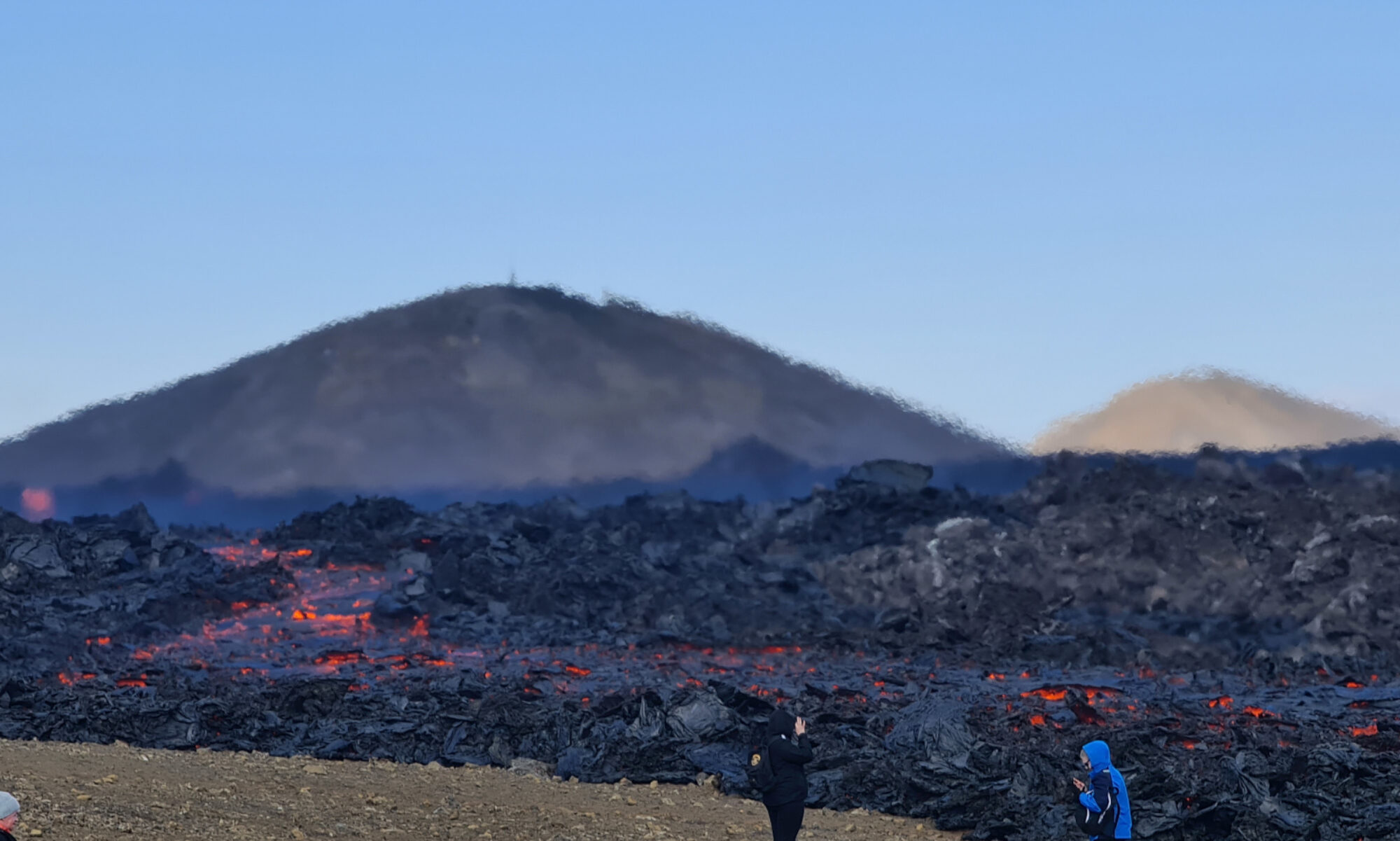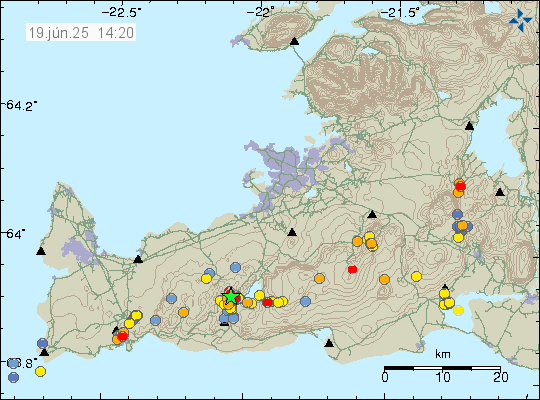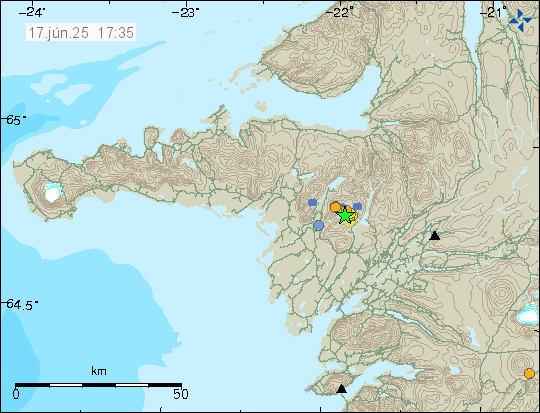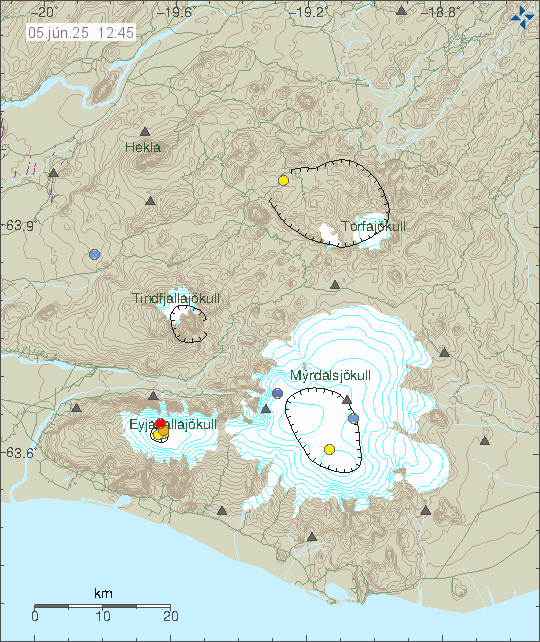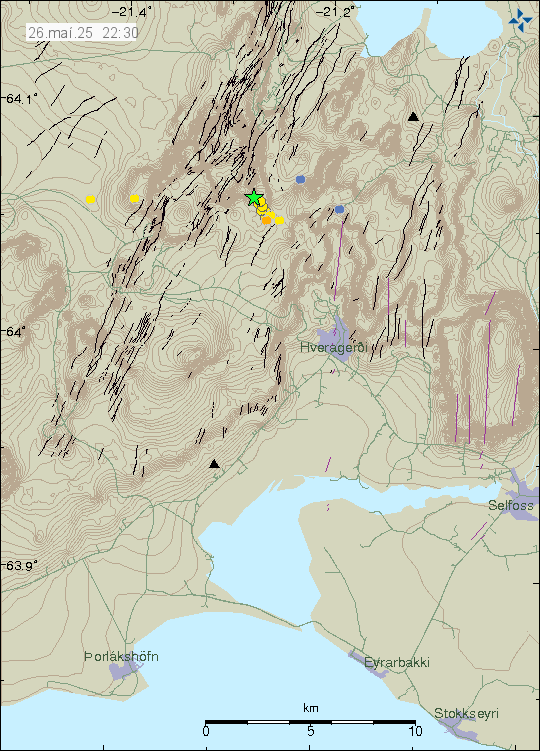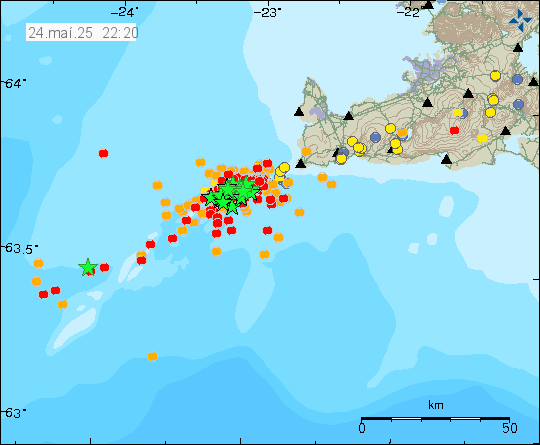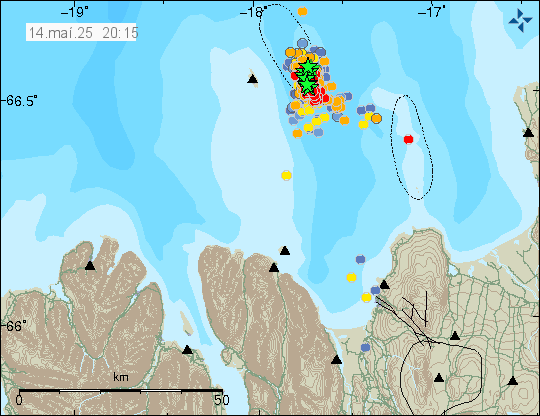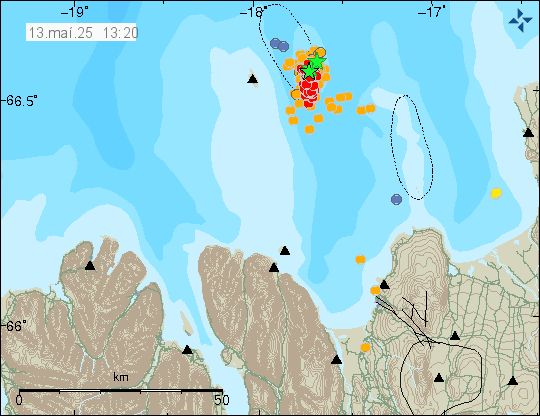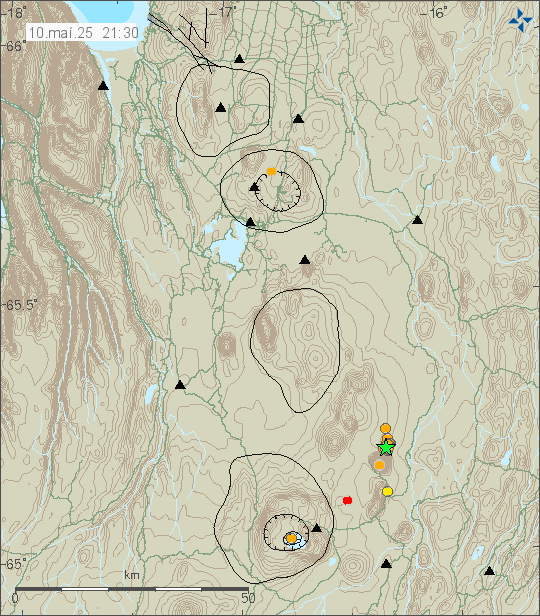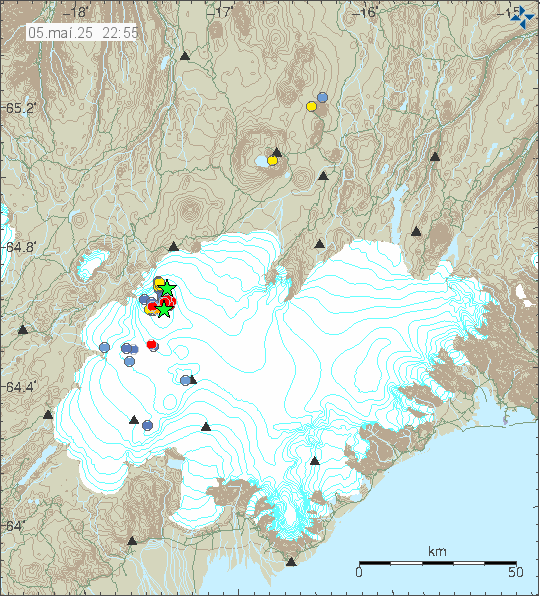This morning (7-July 2025) at 04:38 UTC an earthquake with magnitude of Mw3,4 took place in SISZ, close to a location called Árnes. More then a dozen smaller earthquakes followed the largest earthquake. There are no reports that this earthquake was felt, but its not impossible in the summer houses that are in this area.
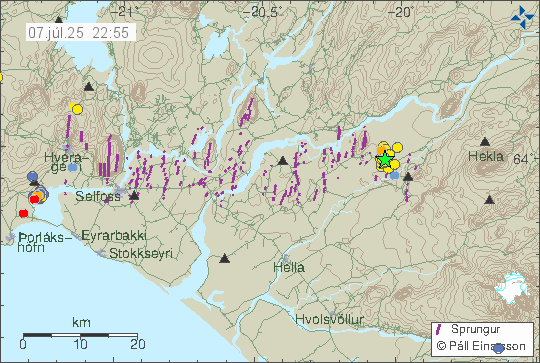
I don’t think this earthquake swarm is a sign of a large earthquake happening in SISZ. Since those often happen without much warning. This earthquake swarm has now stopped.
